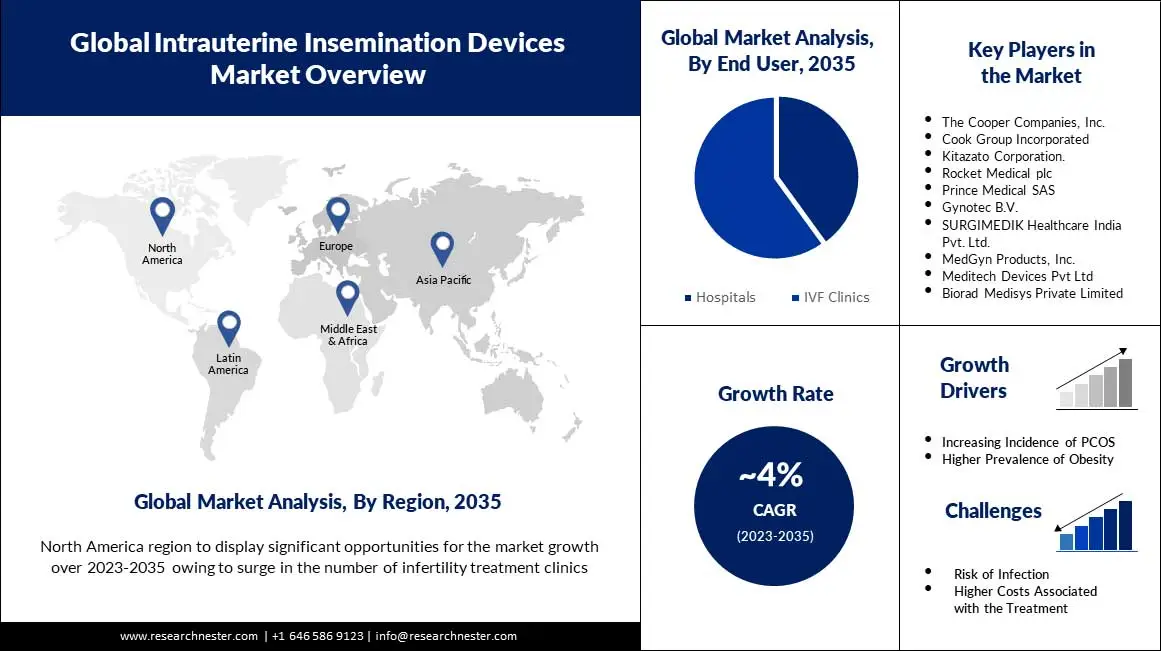
Intrauterine Insemination Devices Market size was valued at USD 41.52 Billion in 2023 and is likely to reach USD 67.43 Billion by the end of 2036, expanding at around 3.8% CAGR during the forecast period i.e., between 2024-2036. In the year 2024, the industry size of intrauterine insemination devices is assessed at USD 42.94 Billion. The growth of the market can be attributed to the increasing occurrence of infertility across the world. Intrauterine insemination devices are used to test infertility by placing sperm directly in the uterus when an ovary releases one or more eggs. The main purpose of intrauterine insemination devices is to increase the chances of fertility. It is estimated that over 14% of couples worldwide are unable to conceive, compelling the global demand for intrauterine insemination devices.
Intrauterine insemination is an artificial process in which the sperm is placed in the upper uterine cavity to ease conception. The goal of the procedure is to increase the number of sperms inside a woman’s uterus, thereby raising the chances of impregnation. Catheters, intrauterine insemination media, and sperm wash are some intrauterine insemination devices. They are used when women are unable to get pregnant owing to a condition called endometriosis. Endometriosis afflicts about 10% of women and girls of childbearing age around the world, according to data from the World Health Organization (WHO). This is predicted to promote the growth of the global intrauterine insemination devices market. Hence, all these factors are anticipated to propel the growth of the market during the forecast period.

Author Credits: Radhika Pawar
Copyright © 2024 Research Nester. All Rights Reserved

FREE Sample Copy includes market overview, growth trends, statistical charts & tables, forecast estimates, and much more.
Have questions before ordering this report?